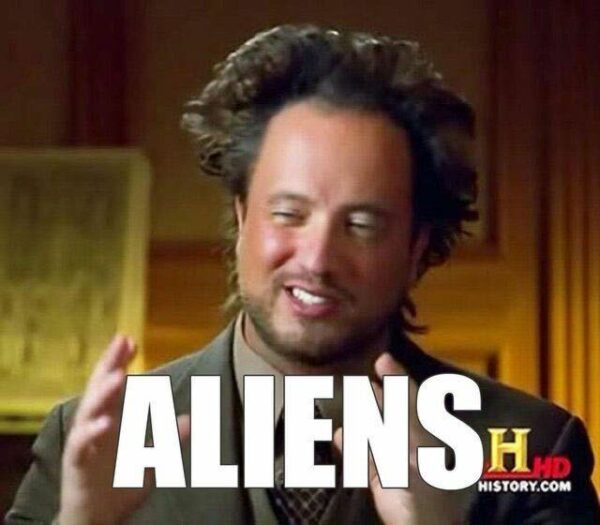Have you ever heard of the “Tassili Mushroom Figure“?
Found deep in the Sahara Desert, within Algeria’s Tassili n’Ajjer National Park, is a rock painting like none other.
It dates as far back as 7,000-9,000 years and its symbolic depiction has given historians and archaeologists much to argue about and debate over.
The figure looks like a humanoid with a mushroom-shaped head, surrounded by what appears to be other mushrooms or mushroom-like objects.
The working theories are:
- Shamanic practices: Some researchers suggest the painting represents ancient shamanic rituals involving psychoactive mushrooms.
- Alien theories: More controversial interpretations propose the figure as evidence of extraterrestrial contact.

- Symbolic representation: Others argue it may symbolise spiritual or cultural concepts unrelated to literal mushroom use.
- Possibly symbolic of fertility or a connection to the natural world, given the prominence of mushrooms in various cultures as symbols of growth and life.
Regardless of interpretation, the Tassili Mushroom Figure is unique, intriguing and mysterious.
More Historical Context
The Tassili Mushroom Figure is part of a larger collection of rock art found in the Tassili n’Ajjer plateau in southeastern Algeria.
This region spans only over 500 kilometres but is home to one of the world’s most important and extensive collections of prehistoric art.
This area alone contains over 15,000 engravings and paintings dating from 12,000 BCE to about 100 CE.
Historical timeline:
- Neolithic period (c. 10,000 – 3,000 BCE): The Tassili Mushroom Figure is believed to have been created during this era, specifically in the period known as the “Round Head” phase of Saharan rock art (c. 9,000 – 7,000 BCE).
- It was so long ago that the Sahara was not a desert but a lush, green savanna.
- Discovery: The rock art of Tassili n’Ajjer was first reported to the Western world in 1933 by French soldiers, but it wasn’t until the 1950s that extensive exploration and documentation began.
- Henri Lhote’s expeditions: French ethnographer Henri Lhote led several expeditions to the area between 1956 and 1970, he catalogued thousands of paintings and brought them to wider attention.
- UNESCO recognition: In 1982, UNESCO designated Tassili n’Ajjer as a World Heritage Site, acknowledging its exceptional archaeological and artistic significance.
- Ongoing research: Since its discovery, the Tassili Mushroom Figure and other artworks in the region have been subject to continuous study and interpretation by archaeologists, anthropologists, and art historians.
It was in the ’90s that Terrence Mckenna shone his light on these paintings suggesting a link between early human use of psychoactive substances. He wrote about it in his 1993 book called Food of the Gods and the the psychedelic community has been fascinated with it ever since.
This article in Open Culture explains it best:
“However rich the visions experienced by the cave painters who once lived there, surely none could have been as mind-blowing as the idea that their work would still fire up imaginations nine millennia later.”
The Artistic Perspective
All possible theories aside and from an artistic standpoint, the Tassili Mushroom Figure is evidence of the creativity and sophistication of early human societies.
The obvious attention to detail and symbolism demonstrate a deep understanding of the world and their ability to express complex ideas through art.
We may never understand the full context of these cave paintings. Its secrets may forever be kept despite the seeds of intrigue planted in us ‘modern’ humans.
As I often hear myself say, the more we know, the more we understand how much more there is to learn.
Learning about these cave paintings is an opportunity to celebrate the creativity and ingenuity of those who came before us, leaving behind a legacy that continues to inspire, intrigue and teach us.
Have you ever heard of these cave paintings? Have you seen any of them yourself?
Let me know in the comments below.
As always,
Flow strong.
Asha ✨







0 thoughts on “The Tassili Mushroom”